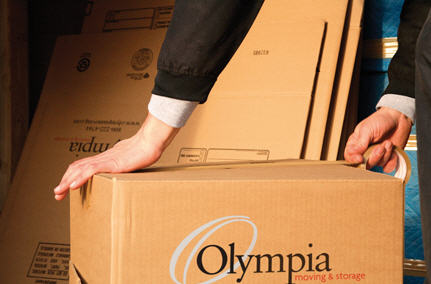Improper packing is far and away the leading cause of damages during a move. Packing is somewhat of an art form and Olympia Moving spends hundreds of hours training our crews on best practices on an annual basis. Obviously, if you choose to pack yourself, you will need to get up to speed as fast as possible; so the following suggestions should serve as a quick primer.
Tips to Packing For Your Move
1) Leave yourself enough time to organize and pack. Packing and preparing for a move always takes longer than anticipated. If you find that you are running out of time, contact your relocation coordinator and request assistance.
2) Organize your space before initiating the packing process. This will save you a lot of time.
3) Setup a “packing workstation” with a flat surface upon which you can lay your packing paper.
4) Place empty boxes that you are in the process of packing on top of a full carton so that you don’t have to bend down to pack the box. This is both a faster approach and will protect you from back injuries.
Packing Materials
5) The best packing material is plain white newsprint (packing paper), which can be supplied by any moving company. It is the right consistency and, unlike newsprint, will not leave ink stains on the items you are trying to protect.
6) Be generous in your use of paper. Packing paper is not cheap; but it is much less expensive than damaged goods.
7) In the vast majority of cases, paper is preferable to bubble wrap. In addition, paper is considerably less expensive and it more environmentally sound.
Organize Your Packing Items
8) Pack in tiers. If you are packing breakable items, put a “cushion” of crumpled up paper on the bottom of each box. Then individually wrap each item and place it gently and securely in the box. Make sure that everything is packed tightly together and then add another tier of cushioning.
9) Pack “like items” together; such as “pots and pans” or “dishes”. This makes the unpacking process smoother.
10) Label carefully on the top and two adjacent sides of each box. The labels should include your last name, the room that the items came out of, and a few words about the contents of the box. This will help the movers to know where to place the carton in your new residence.
11) Do not leave any extra space in your containers. The strength and integrity of the box is largely determined by what is inside the box. The rule of thumb is that if you gently shake the box and hear any movement, you need to add paper.
12) When taping the box shut, use proper moving tape. Tape securely along each seam of the box and then run your hand over the tape to make sure that it has adhered to the cardboard.

